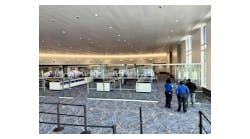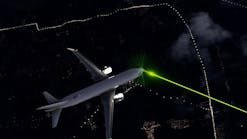Korea Airports Corporation Selects Rockwell Collins Passenger Processing Solution for 14 Airports
Korea Airports Corp. (KAC) has selected Rockwell Collins’ ARINC vMUSE common use passenger processing solution (CUPPS) for 14 South Korean airports nationwide. In 2016, KAC airports handled 62 million passengers traveling on approximately 380 thousand domestic flights.
The South Korean aviation industry is experiencing significant growth, with average annual increases of 6.7 percent for flights and 14.2 percent for passengers over the last five years. The opening of new airlines and air routes has created a requirement to expand the infrastructure of airport facilities and to efficiently utilize airport resources. To meet this need, KAC has expanded its use of Rockwell Collins’ ARINC vMUSE, currently implemented at Gimpo, Kimhae and Jeju Airports for international flights, for use at all its domestic airports. ARINC vMUSE facilitates the passenger check-in process, optimizes operating costs and enables the efficient utilization of airport resources.
“Over the past 10 years, low-cost carriers (LCCs) have increasingly become an important part of South Korea’s aviation market,” said Christopher Forrest, vice president of Airport Systems for Rockwell Collins. “KAC initiated this project to assist new LCCs that want to fly into Korea’s domestic and international airports, but do not have dedicated check-in counters. This solution enables those airlines to connect to their own reservation system from any check-in counter, improving efficiency and significantly reducing downtime.”
Future plans call for KAC to work with Rockwell Collins as part of its 2025 vision of “Korean Airport Group Leading the Future with New Customer Value” strategy to introduce advanced technologies such as artificial intelligence robots, big data and virtual reality to its airports.
In addition to the latest agreement, all of Korea’s major low-cost carriers are using Rockwell Collins’ ARINC GLOBALink to enable their aircraft flying throughout the region to seamlessly communicate and exchange information with ground crews and airline host systems.



